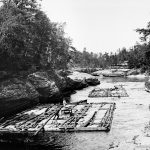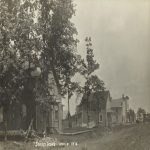While local governments across the United States struggled to deal with the sharp economic downturn in the first years of the 1930s, Langlade County initially found itself in an enviable position at the onset of the Great Depression.
The county, with a total population of 22,000 people (almost half of which lived in the county seat of Antigo), hosted a strong agricultural base that included a top-ranked potato production business. The dairy industry, supported by a Kraft Cheese plant and a milk co-op plant established in Antigo in the 1920s, also contributed to the county’s economic base. Other light industry continued to thrive, helping create a sense of optimism throughout Langlade. In 1931, Antigo city council saw no need to ask for formal assistance for federal aid with agriculture and light manufacturing still doing well.
The areas of the county that relied on forest products, however, were not so fortunate. Natural disasters such as drought and several forest fires, as well as decades of clear cutting of the area’s timber, resulted in a depressed industry that affected Langlade’s economic base. By 1934, the number of families on relief had climbed from about 700 to 1,270, and money spent on relief had risen from $8,000 to $40,000. In dire economic straits, Antigo and the county sought and received federal Civil Works Administration (CWA) funds for eleven city projects and twelve county projects. Civilian Conservation Corps camps were also established in Langlade County and other parts of Wisconsin as an important work relief, forest restoration, and infrastructure program.
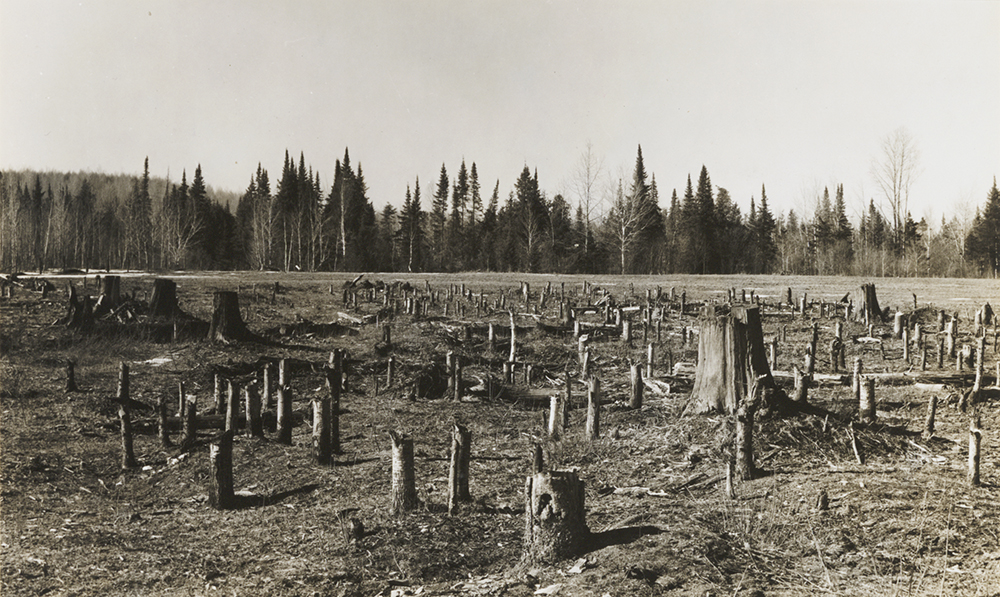
In 1935, the Federal Emergency Relief Administration (FERA) provided over $500,000 to Antigo for a number of public projects, including the creation of a new water treatment plant that included nine new or improved bridges and shoreline maintenance of Springbrook Creek. The FERA funds were also used towards the construction of a new high school football stadium, as well as rural projects such as a public park at Moose Lake, and the building of a dam on the Wolf River, intended to improve recreational boating and fishing possibilities.
Federal assistance was not only limited to construction projects. The Works Progress Administration (WPA) also hired people to organize recreational, sports, and cultural activities for the people of Langlade County. Funds also went to the cleanup of the lakeshore of Kellogg’s Pond, previously the site of many sawmills. With the cleanup and creation of recreational space, the lake was renamed Antigo Lake.
The fact that Langlade County at first fared much better than many parts of the United States during the Depression perhaps explains why in 1933 a young Rose Mary Drab could afford the new black cotton sateen and green felt to fashion a commemorative pillow honoring her brother Ed’s Civilian Conservation Corps service.
Written by Joe Hermolin.
SOURCES
Ronald Nye, “Langlade County’s Grange Movement” (Master’s Thesis, University of Wisconsin-Stevens Point, 1976).
John Omernik, “Agricultural Progress in Langlade County Marked,” Antigo Daily Journal, December 31, 1930.
“W.J. Gallon Looks Forward to Better Times for Antigo: President of the Association of Commerce Points to Favorable Factors,” Antigo Daily Journal, December 30, 1933; “Ten Bridges Constructed in One Year,” Antigo Daily Journal, December 31, 1934.
John Omernik, “Agricultural Progress in Langlade County Marked,” Antigo Daily Journal, December 31, 1930.
John Omernik, “Agricultural Progress in Langlade County Marked,” Antigo Daily Journal, December 31, 1930; “Ten Bridges Constructed in One Year,” Antigo Daily Journal, December 31, 1934.
“Antigo FERA Work Projects Call for $30,000 in Labor,” Antigo Daily Journal, August 17, 1934.
“Summary of Construction in Antigo during 1935,” Antigo Daily Journal, December 31, 1935; “First Unit of Local Lake Project Has Been Completed,” Antigo Daily Journal, December 31, 1936.
RELATED STORIES
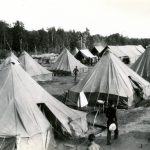
Daily Life in the Civilian Conservation Corps
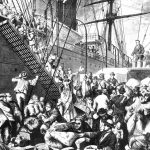
An Immigrant Family in Rural Wisconsin

The Civilian Conservation Corps


